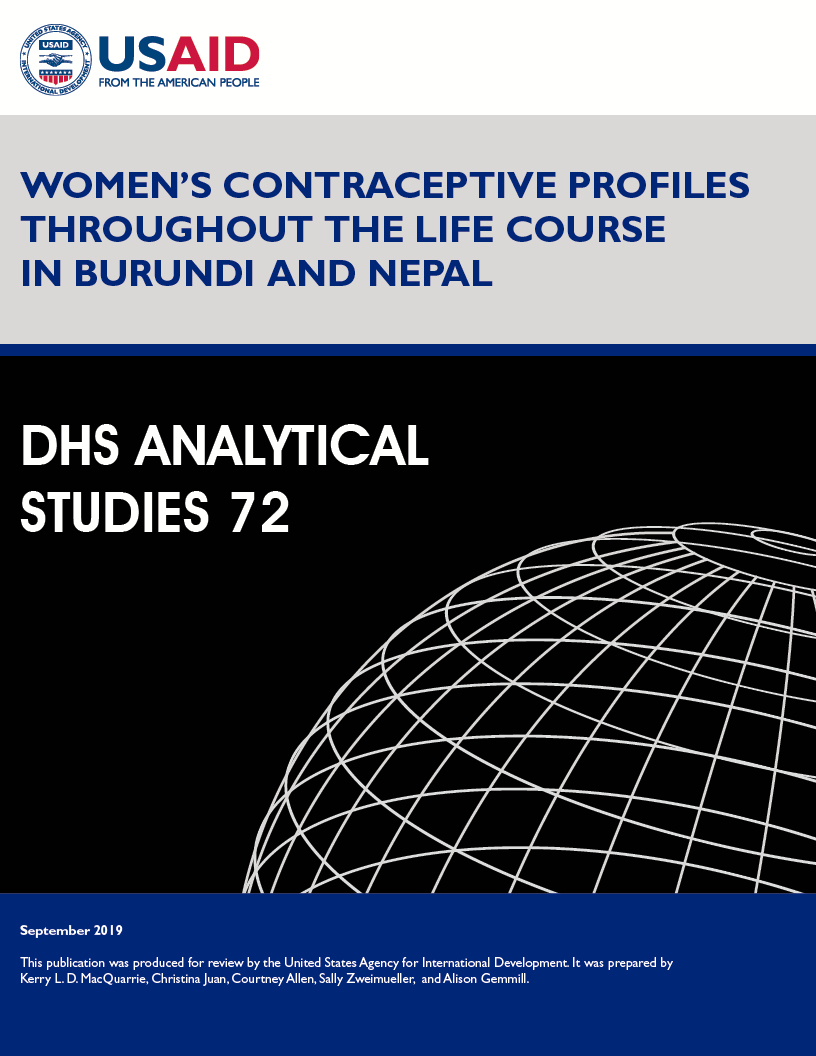
Abstract:
This study uses sequence and cluster analysis
to identify profiles that characterize
women’s dynamic contraceptive use and
pregnancy experiences by using 5-year,
retrospective, longitudinal data from the
Demographic and Health Surveys (DHS)
contraceptive calendars. We conduct this
analysis in two countries with differing
contexts: Burundi and Nepal. We also develop
new data visualizations to display these
dynamic contraceptive profiles and to
demonstrate how they shift over the life
course.
Despite the differing contexts, we find
several commonalities in the contraceptive
profiles. We identify six distinct profiles
in each country. Quiet Calendar and Family
Builder profiles, which involve little to no
use of contraception, are present in both
countries and have the same age distribution.
There are a greater number of small
differences in the profiles that involve
contraceptive use. These profiles are the
Modern Mother (short-term, modern method
use), Consistently Covered and Consistently
Covered Mother (long-acting and permanent
method use), and Traditional Mother and
Consistently Traditional (traditional method
use). Sequences in these profiles commonly
include pregnancies in Burundi, whereas in
Nepal, the Consistently Covered, Consistently
Modern, and Consistently Traditional profiles
consist of women who use one type of
contraception, without interruption or
pregnancy, for the 5-year sequence. The
Modern Mother profile presents in both
countries, with minor variations in the
timing of pregnancy and contraceptive
adoption.
The largest difference between the
Consistently Covered Mother and Consistently
Covered profiles, which increases with age in
Nepal but is concentrated in the middle
reproductive ages in Burundi, is the age
distribution of the other profiles of women
using contraception in both countries. These
differences may reflect differences in the
fertility regimes and method mix of the two
countries. The data visualizations of women’s
dynamic contraceptive profiles, their age
pattern, and characteristics of their members
over the life course provide a roadmap both
for expanding the analysis to additional
countries and conveying the results to
program managers.
